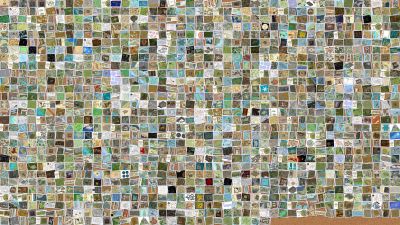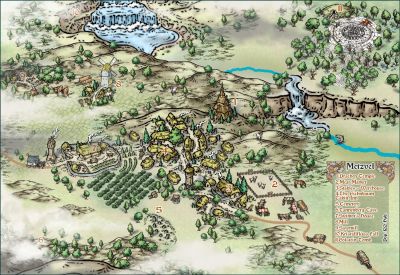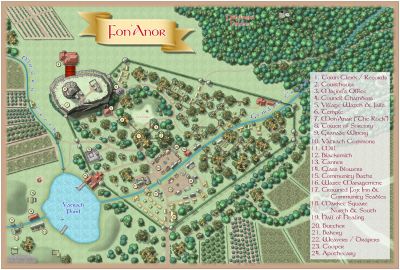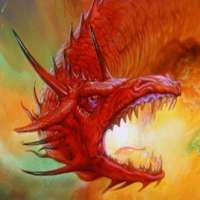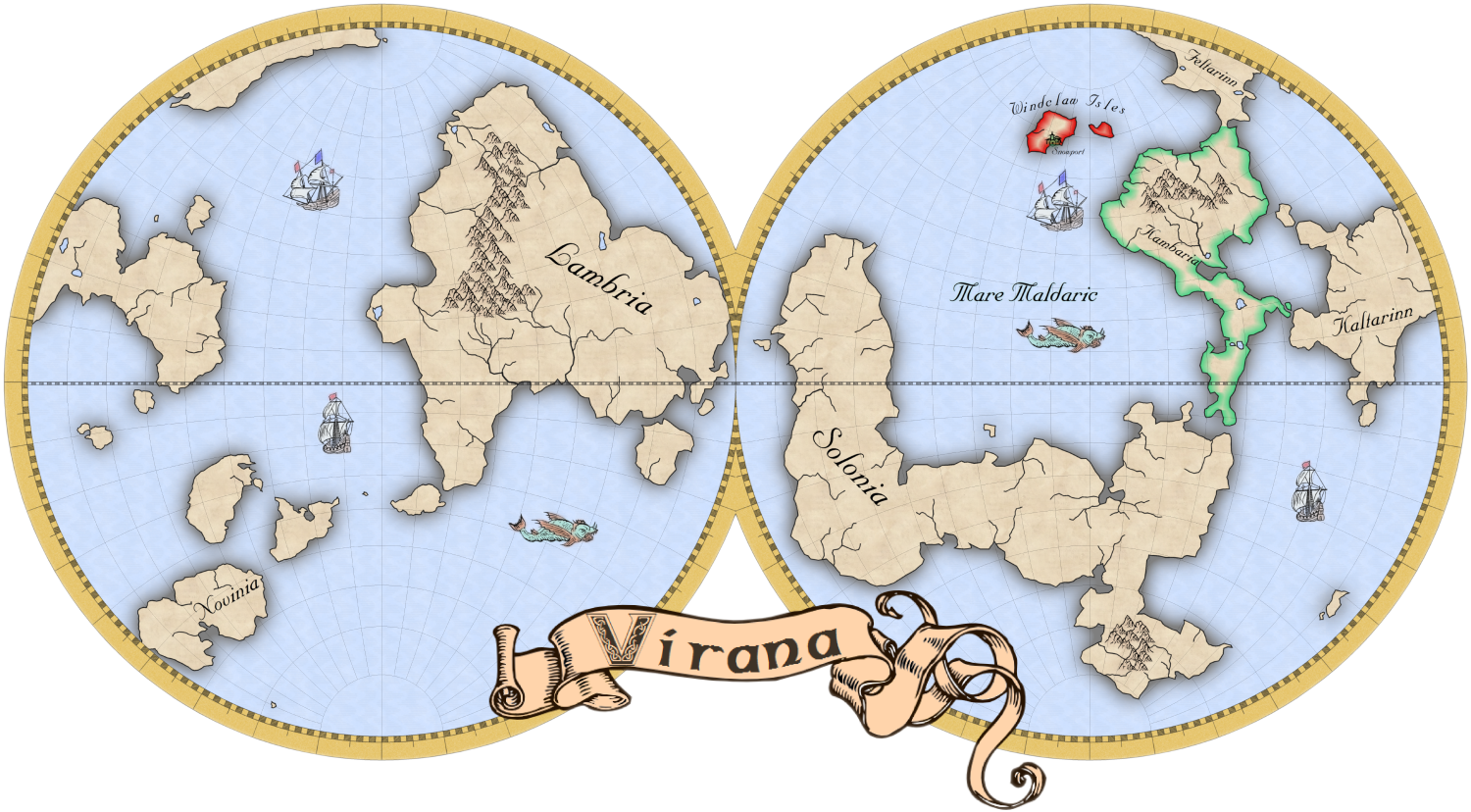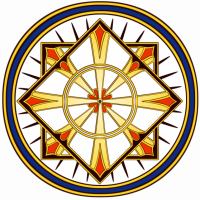
Monsen
Monsen
About
- Username
- Monsen
- Joined
- Visits
- 660
- Last Active
- Roles
- Administrator
- Points
- 8,858
- Birthday
- May 14, 1976
- Location
- Bergen, Norway
- Website
- https://atlas.monsen.cc
- Real Name
- Remy Monsen
- Rank
- Cartographer
- Badges
- 27
-
Which is the proper way to remove walls in the connection between areas?
Use the trim tools, such as :CC2BREAK: to create breaks in lines. Combine it with the various modifiers, such as :CC2MODINT: to start/stop breaks exactly where the lines meet with the line from the other room.
You can then combine the line segments into one path using tools such as Combine Paths if you need to. (If you need to depends on how you are going to use them. Just having individual paths that just meet up in the exact same point is often enough.)
-
Stuck with a Template
The symbol behavior is down to you having lots of unrelated stuff on the HEX/SQUARE grid layer. Hex symbols are special symbols that automatically align with the hex grid, but all that other stuff is basically just confusing them.
As for the export, it looks for the lines on the MAP BORDER layer to see what area to export (If you have the restrict to map border option on), and if you check that layer, you'll see that the defining lines (green in your map) just covers the map area, and do not extend to include those informational areas.
-
I'm hungry for your lore!
Here's my own world of Virana. The map below is my world map. This is my first campaign in it, and the areas with colored borders are the areas the players have been operating in. Well, parts of them anyway. I made the map in the Mercator style from the very first annual. It is one of my favorite styles to this day, especially when it comes to world maps like this. I deliberately kept the map clean and simple, and make more detailed maps of continents and regions as I need it.
More maps on my wiki. Many of the maps in the geography setting are zoomable and have clickable hotspots. The wiki is a bit spare when it come to information, but it has the basics.
Virana is more or less a classic fantasy setting. I keep it somewhat low-magic, because having magic play too much a role in everything never appealed much to me. I mean, it is still an AD&D campaign, with mages and priests and spells, but the everyday inhabitant rarely if ever see anything magical, and as far as magical items for the players go, I try to keep the amount low, but rather make each item meaningful instead of yet another +3 sword. Right now, the players are playing their first campaign in this world, and I am making this campaign about setting up a lot of the background story of the world.
To allow players to be part of the process of shaping the history of the world, I am actually playing a split campaign. The main campaign is set in the campaigns present time, which is the more or less typical AD&D fantasy medieval-inspired time. But, every so often, typically just as they are about to discover something important, I switch timeframes on them, and switch to the secondary campaign, where they play as dragons (under the Council of Wyrms rules), the first rulers of the world, and where their choices and outcome influences what that important discovery in present time is. Dragons are extinct in the present time, mythical beasts just existing in some forgotten lore, but in the past, they were the rulers and world-shakers.
We have now almost completed that first campaign, so I have a good grasp of the world history, so let me outline the basics.
1st Age - The Age of the Great Dragons
In this age, dragons rules the world. They operate in clans (as per the Council of Wyrms rules, but I use my own world and my own clans and my own politics, disregarding the setting from those rules) and the various metallic dragons live on Kambaria, the continent outlined in green on the map. During their time, they see the younger races, Dwarves and Elves rise from small barbaric tribes to a civilization in their own right, and serve as their protectors. The dragons to learn of a threat to the world, the evil dragon-god Tiamat is trying to enter the world and take it over. A lot of the characters time as dragons focused on learning about the threat, figuring out what the treat was all about, before finally learning about Tiamat and trying to stop her. However, the dragons have learned that stopping her permanently will probably not be possible, so their mission is two-fold, prevent her entry into the world at this point in time, as well as prepare the younger races for the fight they will face in the future.
2nd Age - The Age of the Great Races
By this time, the dragons are all dead, the threat from Tiamat has been prevented for now, and the younger races, the elves and dwarves build their great civilizations. It is a good and prosperous time, a time of great civilizations, art and crafts.
But trouble lures in the shadows. This time, Tiamat doesn't have the power of the worship of the evil dragons to rely on, but she is sneaky, planning for the long term. By subtly using her influence, she manages to trick people into believing in her and praying to her, in the guise of 5 benevolent gods. Once she has enough worshipers, she starts to twist the religion, and soon brutal religious wars breaks out, believers in the old true gods versus believers in the new fake gods (Tiamat's aliases). This starts to go well for Tiamat, but she had overseen one thing, with elves and dwarves being killed by the millions, and their civilization collapsing, an opening for a new race to rise to power opened up. The humans entered the scene, and with their short lifespans and rapid breeding, they quickly took over, and at this point, the false gods she had constructed was not very palatable for the humans. She was not defeated, but this setback temporarily halted her plans. However, the civilizations of the great races was now in ruins.
3rd Age - The Age of Humanity
Humans quickly rose to power, and as the years passed, the elven and dwarven civilizations were more or less forgotten, just existing as ruins for the intrepid explorers to discover. The elves and dwarves are now in a minority, and most of them live in the human cities, being outnumbered 100-to-1, generally finding some respect as master craftsmen.
Tiamat quickly realized that these humans was probably even more susceptible to religious manipulation than the older races. She didn't have enough power at this time to maintain more aliases, so she dropped the old ones that had worked against the dwarves and elves and started a new fake pantheon of 5 gods; Marcus the red (Sun; War), Avina the White (Winter, Peace), Khalim the Black (Death, Afterlife, Birth, Life), Kira the Blue (Skies, Seas), Varinda the Green (Spring, Plants, Growth). This new pantheon soon completely replaced the old one (This is partly because she takes a much more active hand, while the old gods, the real gods, take a much more passive approach and expect their followers to govern the world themselves. This was also why her ploy worked in the 2nd age).
The 3rd age is where my main campaign takes place, and it started out with several of the players being priests and paladins of Marcus. The campaign have been a journey towards learning the truth about the world, the gods, and finally learning about Tiamat and stopping her, using the tools they helped create/discover when playing as dragons in the first age. The players are getting close now, I expect the campaign will be over in a handful of sessions.
-
Is there a way to make multipolys out of broken ellipses?
This is a bit of a tricky problem.
The issues you see in figure 3 is because multipolies based what their display on the number of overlapping entities. And while a single ellipse on top of a white background will be exactly two entities, so it will generate a hole in the circle, wherever two ellipses overlap, you will have three entities which results in a solid surface at those locations.
Now, as you discovered, cutting and trimming isn't really a solution here. This is because the way CC3+ handles curves. The nodes of a curve does not lie along the curve itself, and arcs do not have nodes at all, they are a result of pure math. If you try to work with wide lines instead, you get other issues because you can't trim to the actual width of a line since that is just a property, the trim hits the center of the line.
I think the attached version should be what you are asking for though. I started from your figure 2 and converted those arcs to smooth lines. It takes a few steps per line to do this, but basically, split it open so it turns into an arch, use line to path on it, split it open again because the last command closes it, and then use straight to smooth on it. This needs to be done on all six lines individually.
Once that is done, you can start trimming them. It can be advantageous to split them in the middle of the intersections before trimming, and after that you can trim using trim to entity, trim to intersection, or just trim and targeting the endpoint of the other line. Generally, if trim to intersection fails (sometimes it does), a simple trim to the endpoint works instead.
-
Live Mapping - A peaceful day at the mall
Some people like to go shopping, and find great comfort and peace in that.
In honor of that, I am doing a casual stream, making a nice peaceful battle map for use in a mall or similar location when your players just want to have some time off with nothing bad happening to them.
Feel free to watch using the player below, or head over to the stream at YouTube to be able to participate in the chat.
As usual, the scheduled time in your timezone should be visible in the forum sidebar, or YouTube will tell you if you visit the video. It even have a nice notify option if you like to be bothered by emails.


